Way back at the beginning of November I wrote what was intended to be the first of a series of posts about English mathematical practitioners, who were active at the end of the sixteenth and the beginning of the seventeenth centuries. I did not think it would be two months before I could continue that series with a second post, but first illness and then my annual Christmas trilogy got in the way and so it is only now that I am doing so. The subject of this post is a man for whom a whole series of mathematical instruments are named, Edmund Gunter (1581–1626).
Unfortunately, as is all to often the case with Renaissance mathematici, we know almost nothing about Gunter’s origins. His father was apparently a Welshmen from Gunterstown, Brecknockshire in South Wales but he was born somewhere in Hertfordshire sometime in 1581. Obviously from an established family he was educated at Westminster School as a Queen’s Scholar i.e., a foundation scholar (elected on the basis of good academic performance and usually qualifying for reduced fees). He matriculated at Christ Church Oxford 25 January 1599 (os). He graduated BA 12 December 1603 and MA 2 July 1606. He took religious orders and proceeded B.D. 23 November 1615. He was appointed Rector of St. George’s, Southwark and of St Mary Magdalen, Oxford in 1615, he retained both appointments until his death.
Whilst still a student in 1603, he wrote a New Projection of the Sphere in Latin, which remained in manuscript until it was finally published in 1623. This came to the attention of Henry Briggs (1561–1630), who had been appointed professor of geometry at the newly founded Gresham College in 1596, and as such was very much a leading figure in the English mathematical community. Briggs was impressed by the young mathematician befriending him and becoming his mentor. The two men spent much time together at Gresham College discussing topics of practical mathematics. In 1606, Gunter developed a sector, about which later, and wrote a manuscript describing it in Latin, without a known title. This circulated in manuscript for many years and was much in demand. Gunter gave into that demand and finally published it also in 1623.
When the first Gresham professor of astronomy, Edward Brerewood (c. 1556–1613) died 4 November 1613, Briggs recommended Gunter as his successor. However, Thomas Williams another Christ Church graduate, of whom little is known, was appointed just seven days later 11 November 1613. When Williams resigned from the post 4 March 1619, for reasons unknown, Briggs once again supported his friend for the position, this time with success. Gunter was appointed just two days later, 6 March 1619. Like his two rectorships, he retained the Gresham professorship until his death.
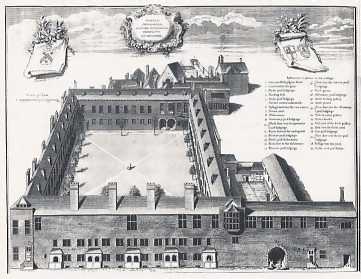
Apparently, he was already spending so much time at Gresham College before being appointed that when the mathematician William Oughtred (1574–1660) visited Henry Briggs there in 1618, he thought that Gunter was already professor there.
In the Spring 1618 I being at London went to see my honoured friend Master Henry Briggs at Gresham College: who then brought me acquainted with Master Gunter lately chosen Astronomical lecturer there, and was at that time in Doctor Brooks his chamber. With whom falling into speech about his quadrant, I showed him my Horizontal Instrument. He viewed it very heedfully: and questioned about the projecture and use thereof, often saying these words, it is a very good one. And not long after he delivered to Master Briggs to be sent to me mine own Instrument printed off from one cut in brass: which afterwards I understood he presented to the right Honourable the Earl of Bridgewater, and in his book of the sector printed six years after, among other projections he setteth down this.
Gunter and Oughtred would go on to become firm friends.
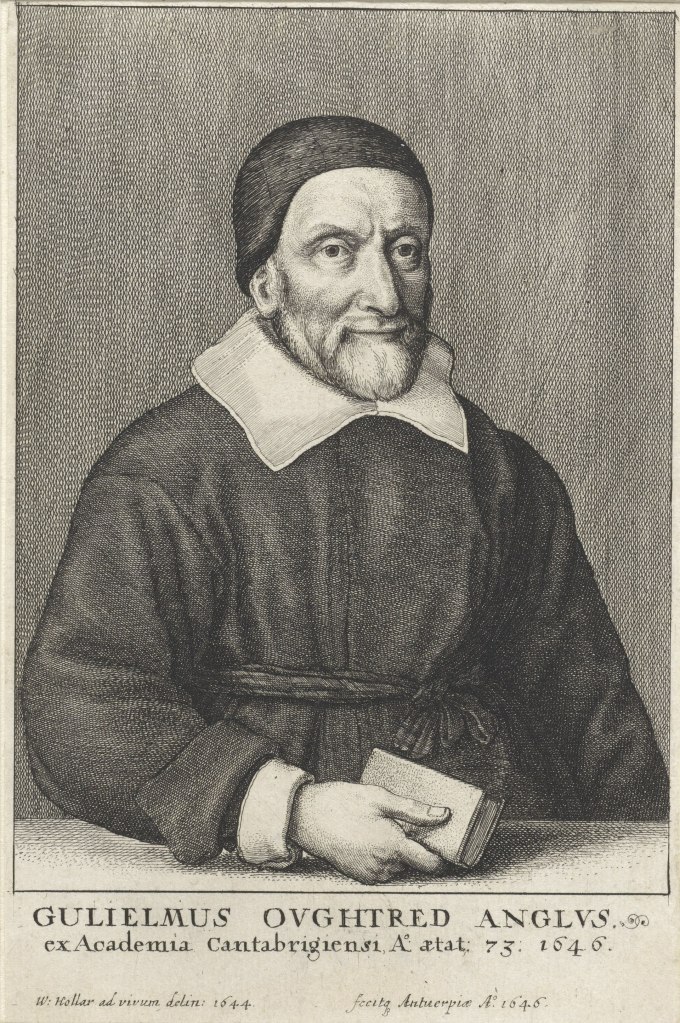
We now have the known details of the whole of Gunter’s life and can turn our attention to his mathematical output but before we do so there is an anecdote from Seth Ward (1617–1689), another mathematician and astronomer, concerning a position that Gunter did not get. In 1619, Henry Savile (1549–1622) established England’s first university chairs for mathematics the Savilian chairs for geometry and astronomy at Oxford. Savile’s first choice for the chair of geometry was Edmund Gunter and he invited him to an interview, according to John Aubrey (1626–1697) relating a report from Seth Ward:
[Gunter] brought with him his sector and quadrant, and fell to resolving triangles and doing a great many fine things. Said the grave knight [Savile], “Do you call this reading of geometry? This is showing of tricks, man!”, and so dismissed him with scorn, and sent for Henry Briggs.
So, Henry Briggs became England’s first university professor of geometry and not Edmund Gunter. One should point out that Ward can only have heard the story second hand as he was only two years old in 1619.
In 1614, John Napier (1550–1617) published his Mirifici Logarithmorum Canonis Descriptio (Description of the Wonderful Canon of Logarithms, 1614), a new method of simplifying calculations. Edward Wright (1561–1615) produced an English translation, which was published posthumously in 1616. Napier’s logarithms were base:
NapLog(x) = –107ln (x/107)
Henry Briggs travelled all the way to Edinburgh to meet the inventor of this new calculating tool. After discussion with Napier, he received his blessing to produce a set of base ten logarithms. His Logarithmorum chilias prima, which were publish in London sometime before Napier’s death in 1617.
Many people don’t realise that Napier’s logarithmic tables were not straight logarithms but logarithms of trigonometrical functions. These are of particular use for astronomers and navigators. It is almost certainly through Brigg’s influence that Gunter’s first publication was a set of base ten, seven figure logarithmic tables of sines and tangents. His Canon Triangulorum sive Tabulae Sinuum et Tangentium Artificialum was published in Latin in 1620. An English translation was published in the same year. The terms sine and tangent were already in use, but it was Gunter, who introduced the terms cosine and cotangent in this publication. Later, on his scale or rule he introduced the short forms sin and tan.
In 1623, Gunter finally published his New Projection of the Sphere written in his last year as an undergraduate. He also published his most important book, Description and Use of the Sector, the Crosse-staffe and other Instruments. This was one of the most important guides to the use of navigational instruments for seamen and became something of a seventeenth century best seller in various forms. David Waters in his The Art of Navigation say this, ” Gunter’s De Sectore & Radio must rank with Eden’s translation of Cortes’s Arte de Navegar and Wright’s Certain Errors as one of the three most important English books ever published for the improvement of navigation.” [1]
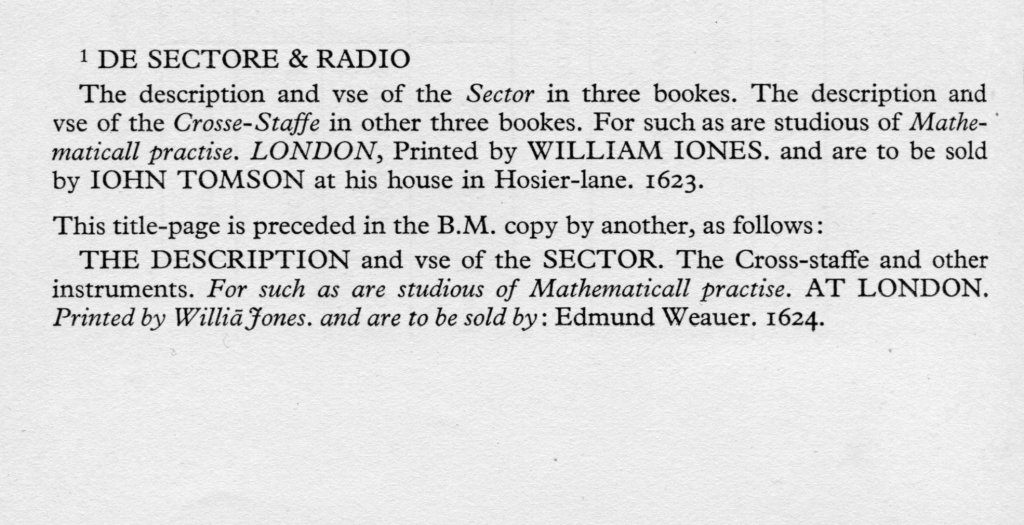
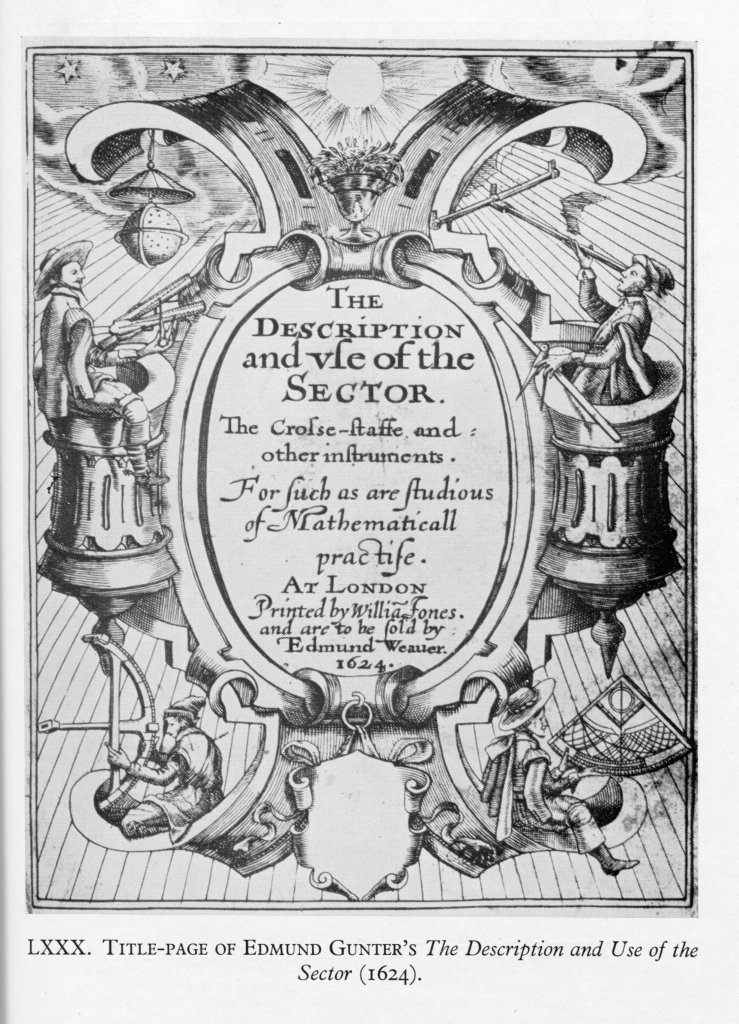
His various publications were collected into The Works of Edmund Gunter, which went through six editions by 1680. Each edition having extra content by other authors. Isaac Newton (1642-1727) bought a copy of the second edition. The title page of the fifth edition is impressive:
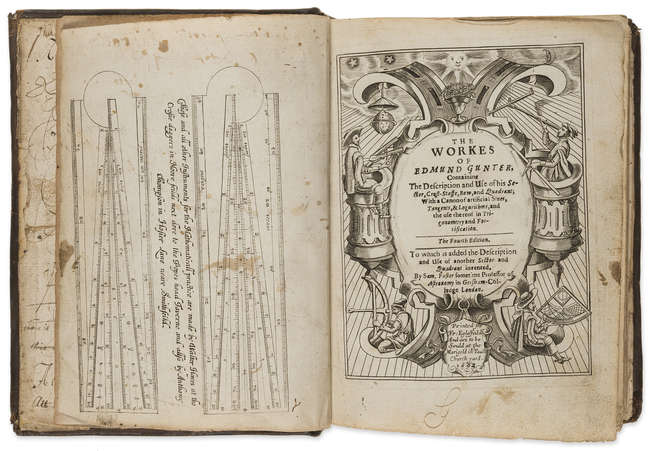
The Works of Edmund Gunter:
Containing the description and Use of the
Sector, Cross-staff, Bow, Quadrant,
And other Instruments.
With a Canon of Artificial Sines and Tangents to a Radius of 10.00000 parts, and the Logarithms from Unite to 100000:
The Uses whereof are illustrated in the Practice of
Arithmetick, geometry, Astronomy, Navigation, Dialling and Fortification.
And some Questions in Navigation added by Mr. Henry Bond, Teacher of mathematicks in Ratcliff, near London.
To which is added,
The Description and Use of another Sector and Quadrant, both of them invented by Mr. Sam. Foster, Late Professor of Astronomy in Gresham Colledge, London, furnished with more Lines, and differing from those of Me. Gunter′s both in form and manner of Working.
The Fifth Edition,
Diligentyl Corrected, and divers necessary Things and Matters (pertinent thereunto) added, throughout the whole work, not before Printed.
By William Leybourne, Philomath.
London
Printed by A.C. for Francis Eglesfield at the Marigold in St. Pauls Church-yard. MDCLXXIII.
The sector, also known as a proportional compass or military compass, was a major calculating instrument in use from the end of the sixteenth century until the nineteenth century. It is an instrument consisting of two rulers of equal length joined by a hinge. A number of scales are inscribed upon the instrument which facilitate various mathematical calculations. It was used for solving problems in proportion, multiplication, and division, geometry, and trigonometry, and for computing various mathematical functions, such as square and cube roots. Its several scales permitted easy and direct solutions of problems in gunnery, surveying and navigation. The sector derives its name from the fourth proposition of the sixth book of Euclid, where it is demonstrated that similar triangles have their like sides proportional. (Wikipedia)
The sector has many alleged inventors. The earliest was Fabrizio Mordente (1532–c. 1608). The invention is often credited to Galileo (1564–1642), who marketed a very successful variant in the early seventeenth century, including selling lessons and an instruction manual in its use. However, Galileo’s instrument was a development of one created by Guidobaldo dal Monte (1545–1607). It is not known if dal Monte developed the device independently or knew of Mordent’s. Thomas Hood (1556–1620) appear to have reinvented the instrument, a description of which he published in his Making and Use of the Sector, 1596.
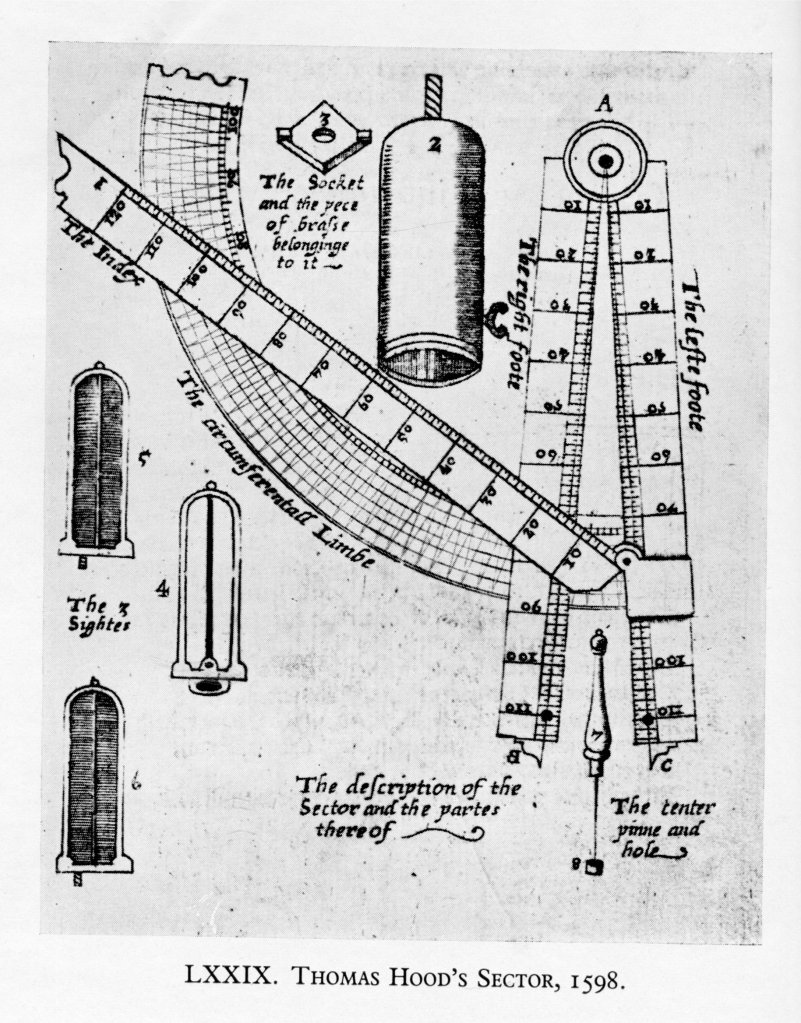
Gunter developed Hood’s instruments adding addition scales, including a scale for use with Mercator’s new projection of the sphere.
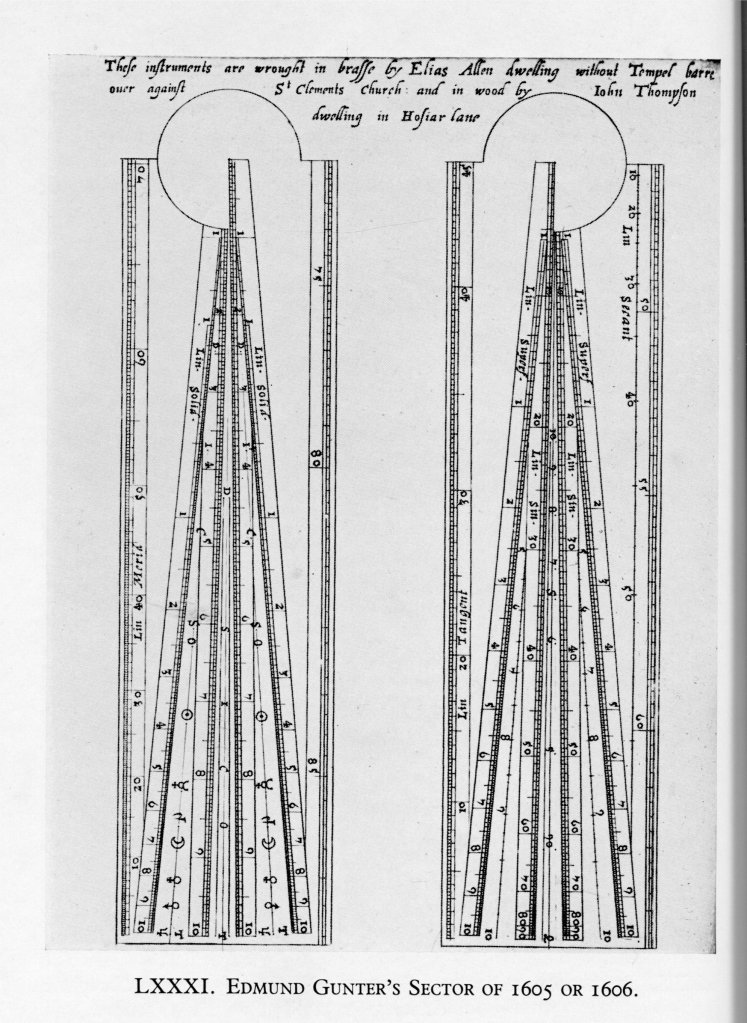
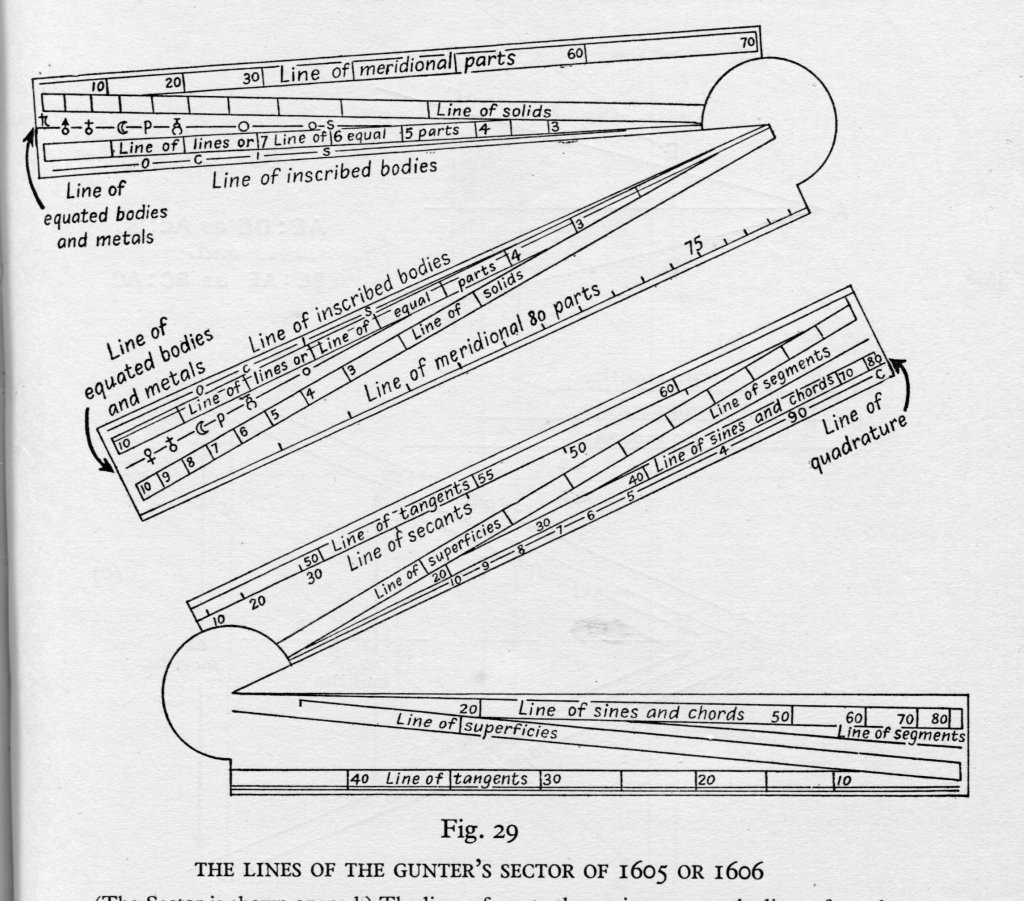
The French Jewish scholar, Levi ben Geshon (1288–1344), published the first description of the cross staff or Jacob’s staff, used in astronomy, surveying, and navigation, in his Book of the Wars of the Lord (originally in Hebrew but also translated into Latin).
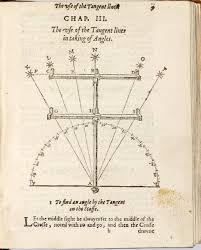
Gunter’s book also describes the Gunter Quadrant, basically a horary quadrant for telling the time by taking the altitude of the sun but with some additional functions.
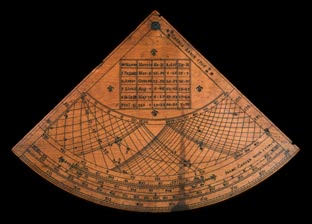
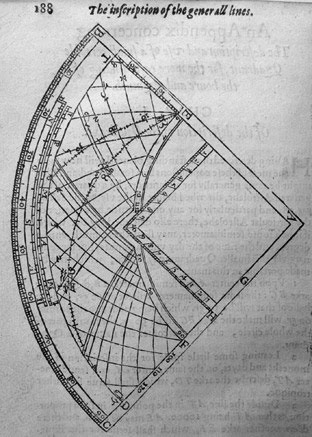
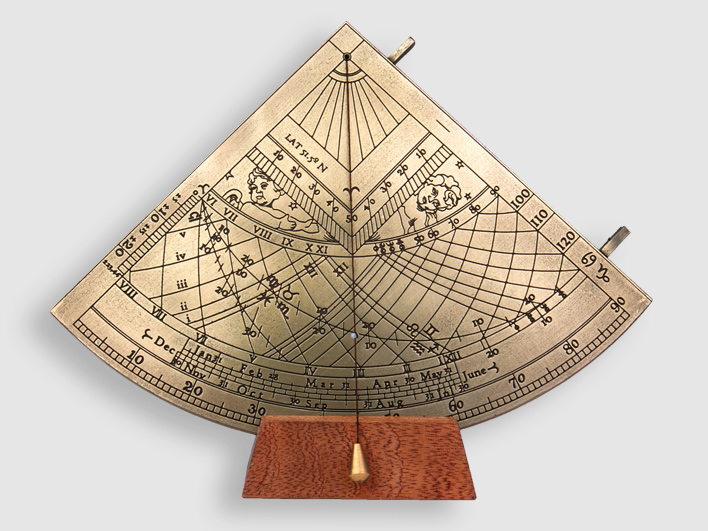
There is also a description of the crossbow an alternative to the backstaff that never became popular.
 100vw, 800px”></a><figcaption class=) ; Navigation: an Astrolabe, a Cross-Staff, and a Back-Staff or Davis’s Sextant; Wellcome Collection; http://www.artuk.org/artworks/navigation-an-astrolabe-a-cross-staff-and-a-back-staff-or-daviss-sextant-241142
; Navigation: an Astrolabe, a Cross-Staff, and a Back-Staff or Davis’s Sextant; Wellcome Collection; http://www.artuk.org/artworks/navigation-an-astrolabe-a-cross-staff-and-a-back-staff-or-daviss-sextant-241142 100vw, 1024px”></a><figcaption class=) ; Navigation: a Cross-Staff or Cross-Bow, and a Sailor Using the Device; Wellcome Collection; http://www.artuk.org/artworks/navigation-a-cross-staff-or-cross-bow-and-a-sailor-using-the-device-241141
; Navigation: a Cross-Staff or Cross-Bow, and a Sailor Using the Device; Wellcome Collection; http://www.artuk.org/artworks/navigation-a-cross-staff-or-cross-bow-and-a-sailor-using-the-device-241141Gunter’s most popular instrument was his scale. The Gunter scale or rule was a rule containing trigonometrical and logarithmic scales, which could be used with a pair of dividers to carry out calculations in astronomy and in particular navigations. The Gunter scale is basically a sector folded into a straight line without the hinge.Sailors simply referred to the rule as a Gunter. William Oughtred would go on to place two Gunter rules next to each other thus creating the slide rule and eliminating the need for dividers to carry out the calculations.
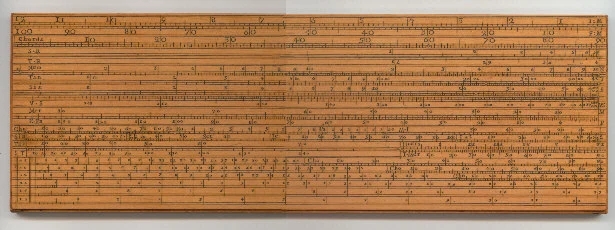
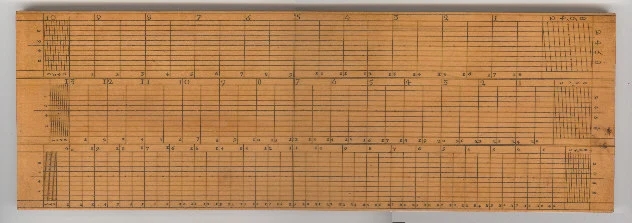
In 1622, Gunter engraved a new sundial at Whitehall, which carried many different dial plates supplying much astronomical data. At the behest of Prince Charles, he wrote and published an explanation of the dials, The Description and Use of His Majesties Dials in Whitehall, 1624. The sundial was demolished in 1697.
Gunter’s most well-known instrument was his surveyor’s chain, which became the standard English Imperial chain. 100 links and 22 yards (66 feet) long, there are 10 chains in a furlong and 80 chains to a mile.
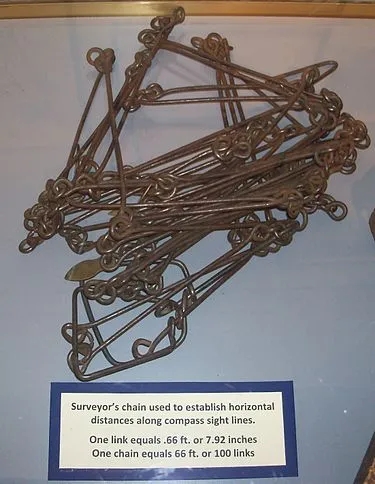
Although Gunter invented, designed, and described the use of several instruments, he didn’t actually make any of them. All of his instruments were produced by the London based, instrument maker Elias Allen (c. 1588–1652). Allen was born in Kent of unknown parentage and was apprenticed in 1602 to London instrument maker Charles Whitwell (c. 1568–1611) in the Grocer’s Company, serving his master for nine years. Following Whitwell’s death in 1611, Allen set up his own business. He rapidly became the foremost instrument maker in London, working mostly in brass, but occasionally in silver. He became very successful and made instruments for various aristocratic patrons and both James I and Charles I. Allen also produced the engravings in Gunter’s books, using them also as advertising in his shop.
He worked closely with various mathematicians including both Oughtred and Gunter. His workshop became a meeting place for discussion amongst mathematical practitioners. He was the first London instrument maker, who could make a living from just making instruments without working on the side as a map engraver or surveyor. His master Whitwell subsidised his income as a map engraver. He rose in status in the Grocers’ Company, becoming its treasurer in 1636 and its master for eighteen months in 1637-38. Over the years many of his apprentices became successful instrument maker masters in the own right, most notably Ralph Greatorex (1625–1675), who was associated with Oughtred, Samuel Pepys, John Evelyn, Samuel Hartlib, Christopher Wren, Robert Boyle, and Jonas Moore, the English scientific elite of the time.
Allen had the distinction of being one of the few seventeenth-century artisans to have his portrait painted. The Dutch artist Hendrik van der Borcht the Younger (1614–1676) produced the portrait, now lost, in about 1640. It still exists as an engraving done by the Bohemian engraver, Wenceslaus Hollar (1607–1677).
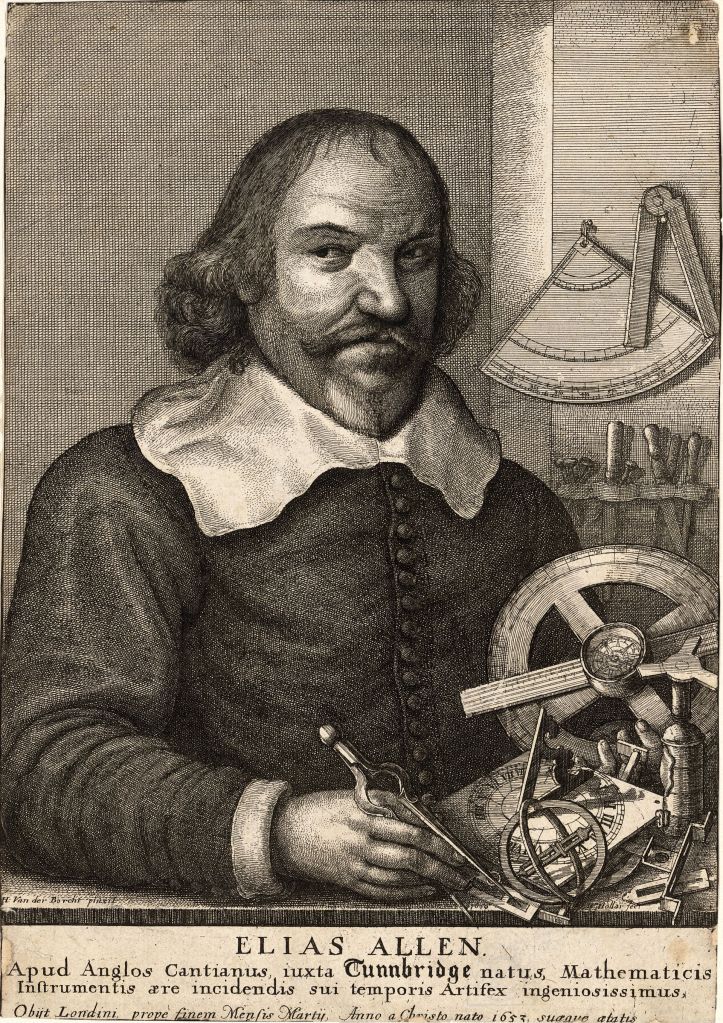
Edmund Gunter was not a mathematician as we understand the term today, but a mathematical practitioner, who exercised a large influence on the practical side of astronomy, navigation, and surveying in the seventeenth century through the instruments that he designed and the texts he wrote explaining how to use them.
[1] David Walters, The Art of Navigation in England in Elizabethan and Early Stuart Times, Yale University Press, 1958 p. 359